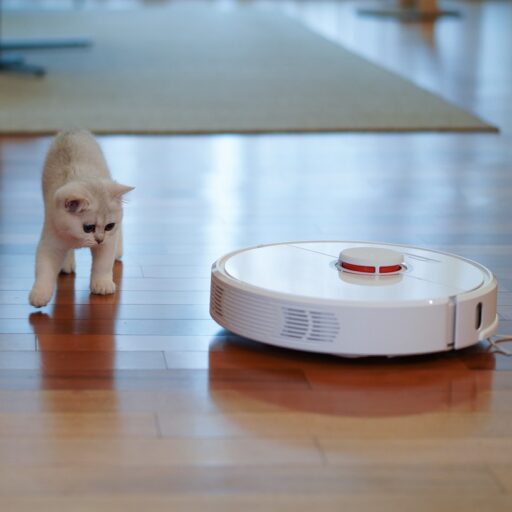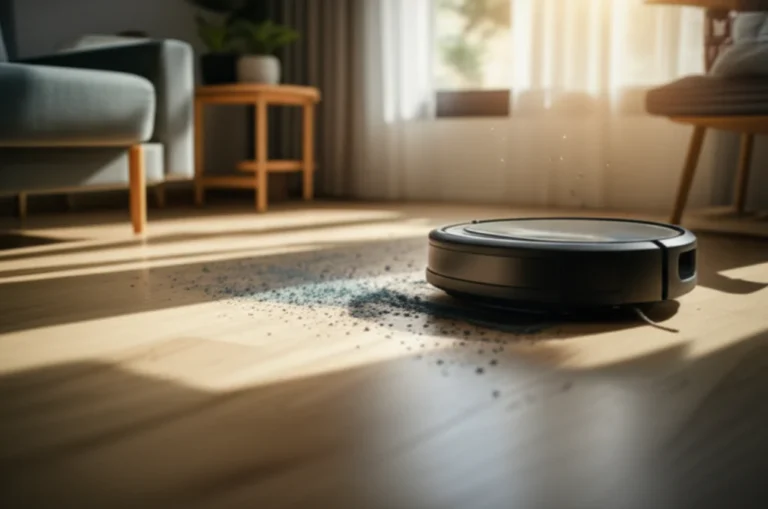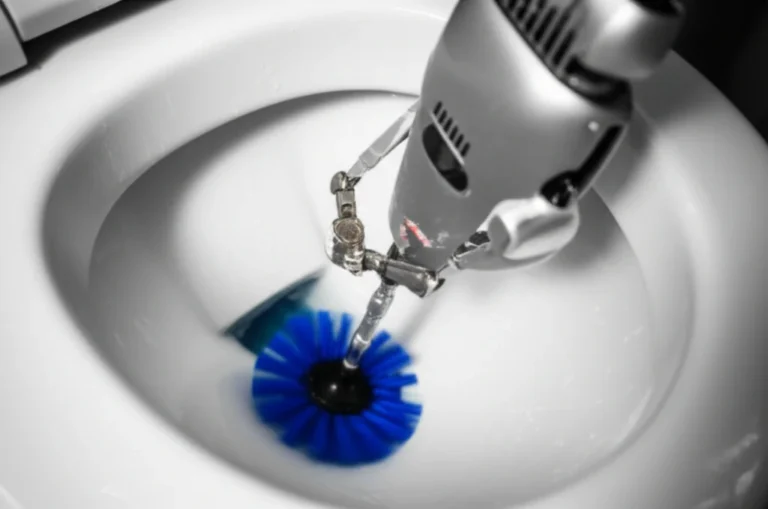Support our educational content for free when you purchase through links on our site. Learn more
12 Surprising Benefits of Robot Lawn Mowers vs Traditional Mowing (2025) 🤖🌿
Imagine reclaiming your weekends while your lawn gets the VIP treatment—trimmed precisely, mulched naturally, and maintained quietly without you lifting a finger. Sounds like a dream, right? Welcome to the world of robotic lawn mowers, the smart lawn care revolution that’s quietly transforming yards everywhere. In fact, did you know that using a robotic mower can save you up to 60 hours a year compared to traditional mowing methods? That’s more time for family, hobbies, or just kicking back with a cold drink.
In this article, we’ll explore 12 compelling benefits of robot lawn mowers—from eco-friendly operation and advanced safety features to smart app controls and improved lawn health. We’ll also share insider tips on choosing the right model for your yard and bust some common myths along the way. Whether you’re a tech enthusiast or just tired of noisy weekend chores, by the end you’ll see why these autonomous machines are the future of lawn care.
Key Takeaways
- Save time and effort with fully autonomous mowing that works on your schedule.
- Improve lawn health through frequent micro-mulching that naturally fertilizes your grass.
- Reduce noise and emissions with quiet, battery-powered operation.
- Enhance safety thanks to advanced sensors and automatic blade shutoff.
- Control your mower remotely via smart apps with GPS tracking and scheduling.
- Cut long-term costs by eliminating fuel and minimizing maintenance.
- Choose from top brands like Husqvarna, Worx, and Ecovacs for tailored features and terrain adaptability.
Ready to ditch the push mower and embrace the future? Keep reading to discover how robotic lawn mowers can transform your lawn care routine—and your life.
Table of Contents
- ⚡️ Quick Tips and Facts About Robot Lawn Mowers
- 🌿 The Evolution of Lawn Care: From Push Mowers to Smart Robotics
- 🤖 What Exactly Are Robotic Lawn Mowers? Features and Functionality Explained
- 🛠️ Traditional Lawn Mowers: Types, Pros, and Cons
- 🔍 12 Compelling Benefits of Using a Robot Lawn Mower vs. Traditional Mowing
- 1. Time-Saving Automation: More Free Time for You
- 2. Consistent Lawn Health: Precision Cutting and Mulching
- 3. Eco-Friendly Operation: Quiet, Electric, and Emission-Free
- 4. Safety Advantages: Reduced Risk of Injuries
- 5. Smart Technology Integration: App Control and Scheduling
- 6. Cost Efficiency Over Time: Energy Savings and Maintenance
- 7. Adaptability to Complex Lawns and Terrain
- 8. Noise Reduction: Peaceful Neighborhoods
- 9. Weather Resistance and All-Season Use
- 10. Environmental Impact: Less Soil Compaction and Chemical Use
- 11. Enhanced Property Value and Curb Appeal
- 12. User-Friendly Maintenance and Troubleshooting
- 💡 How to Choose the Best Robot Lawn Mower for Your Yard
- 🔧 Installation and Setup: What to Expect When Switching to Robotic Mowing
- 🧹 Maintenance Tips: Keeping Your Robot Lawn Mower in Top Shape
- 💬 Real User Stories: Our Team’s Experience With Robot Lawn Mowers
- 🤔 Common Concerns and Misconceptions About Robotic Lawn Mowers
- 📈 Comparing Leading Brands: Husqvarna, Worx, Robomow, and More
- 🔍 Frequently Asked Questions About Robot Lawn Mowers
- 🎯 Final Thoughts: Is a Robot Lawn Mower Right for You?
- 🔗 Recommended Links for Further Reading and Purchase
- ❓ FAQ: Quick Answers to Your Burning Questions
- 📚 Reference Links and Resources
Hello, lawn care enthusiasts and fellow tech lovers! We’re the engineering team at Robot Instructions™, and if there’s one thing we love more than building robots, it’s watching them do our chores. Today, we’re diving deep into a topic that’s near and dear to our hearts (and our weekends): the glorious revolution of the robot lawn mower.
Are you tired of spending your Saturday mornings wrestling with a noisy, gas-guzzling beast? Do you dream of a perfectly manicured lawn without lifting a finger? Well, you’re in the right place. We’re about to compare these automated wonders to traditional mowing methods and uncover why you might want to fire your old push mower. Let’s get rolling!
⚡️ Quick Tips and Facts About Robot Lawn Mowers
In a hurry? Here’s the lowdown on what makes these bots the future of lawn care.
| Feature | Robotic Lawn Mower | Traditional Mower (Gas) |
|---|---|---|
| Operation | ✅ Fully autonomous, scheduled mowing | ❌ Manual pushing or riding required |
| Noise Level | 🤫 Whisper-quiet (~60 dB) | 📢 Loud and disruptive (~85-90 dB) |
| Emissions | ✅ Zero direct emissions (battery-powered) | ❌ Emits pollutants and greenhouse gases |
| Lawn Health | ✅ Frequent, small cuts (mulching) improve health | ➖ Can stress grass with infrequent, deep cuts |
| Convenience | ✅ Set it and forget it; app control | ❌ Requires time, physical effort, and fuel |
| Safety | ✅ Advanced sensors, auto-shutoff features | ❌ Higher risk of personal injury |
| Long-Term Costs | ✅ Lower (no fuel, less maintenance) | ❌ Higher (fuel, oil, spark plugs, repairs) |
🌿 The Evolution of Lawn Care: From Push Mowers to Smart Robotics
Remember the old days? The rhythmic whir of a manual reel mower, the satisfying clank of metal on grass. It was simple, sure, but it was also hard work. Then came the gas-powered revolution, promising power and speed, but delivering noise, fumes, and constant maintenance. We’ve come a long way since then.
The journey to automated lawn care is a fascinating tale of innovation. It’s a story that moves from sheer mechanical force to the sophisticated world of Artificial Intelligence and Autonomous Robots. The first robotic mowers were clunky, often getting lost in the backyard. But now? They’re sleek, smart, and more efficient than ever, leveraging technologies that were once the stuff of science fiction.
🤖 What Exactly Are Robotic Lawn Mowers? Features and Functionality Explained
Think of a robotic lawn mower as a Roomba for your yard, but way more rugged. These machines are designed to live outdoors and autonomously maintain your lawn with minimal human intervention. Here’s the tech that makes it all happen:
- Navigation Systems: This is the brain of the operation. Older models relied on a boundary wire you’d install around the perimeter of your lawn. The mower’s sensors detect this wire and know not to cross it. Modern, high-end models, however, are going wireless! They use a combination of GPS, RTK (Real-Time Kinematic) technology, and vision sensors to map your yard and navigate with centimeter-level accuracy.
- Cutting Mechanism: Forget a single, heavy blade. Robotic mowers use a set of small, razor-sharp blades that spin on a disc. They don’t hack away at the grass; they snip just the very tips. This method, known as micro-mulching, is a game-changer for lawn health.
- Power and Charging: These mowers are battery-powered and eco-friendly. When the battery gets low, the mower automatically returns to its charging station to juice up before heading back out to finish the job.
- Sensors and Safety: They are packed with sensors. Lift and tilt sensors immediately stop the blades if the mower is picked up. Collision sensors help it navigate around trees, garden furniture, and other obstacles. Advanced models even use cameras and AI to identify and avoid unexpected objects like toys or pets.
🛠️ Traditional Lawn Mowers: Types, Pros, and Cons
Before we crown our robotic champion, let’s give a nod to the old guard. Traditional mowers still have their place, and it’s important to understand what they offer.
- Gas-Powered Mowers: The workhorses. They come in push, self-propelled, and riding varieties.
- Pros: ✅ Powerful, fast, and effective on large or overgrown lawns.
- Cons: ❌ Loud, heavy, require constant maintenance (oil, gas, spark plugs), and are terrible for the environment. The EPA has noted that running a gas mower for one hour can produce as much pollution as driving a car for hundreds of miles.
- Electric Mowers (Corded & Cordless): A quieter, cleaner alternative.
- Pros: ✅ Less noise, no emissions, and lower maintenance than gas mowers.
- Cons: ❌ Corded models have limited range, while cordless models have limited battery life. They can be less powerful than their gas counterparts.
🔍 12 Compelling Benefits of Using a Robot Lawn Mower vs. Traditional Mowing
Alright, it’s time for the main event! Why should you seriously consider making the switch? As engineers who live and breathe this stuff, we’ve seen the benefits firsthand.
1. Time-Saving Automation: More Free Time for You
This is the number one reason people switch. The average homeowner can spend up to 60 hours a year mowing their lawn. A robotic mower gives you that time back. Once it’s set up, it operates on a schedule you create, working day or night, rain or shine (within limits), without any supervision from you. More time for family, hobbies, or just relaxing on your beautifully manicured lawn.
2. Consistent Lawn Health: Precision Cutting and Mulching
This is where the magic really happens. Traditional mowing is like giving your lawn a drastic haircut every week or two, which can stress the grass. Robotic mowers take a different approach.
- Frequent Trimming: They mow a little bit, every day or two. This constant trimming encourages the grass to grow thicker and stronger, creating a denser, more carpet-like turf.
- Natural Fertilization: The tiny clippings, or micro-mulch, fall back into the soil. They decompose quickly, returning vital nutrients to the roots. This natural fertilization process reduces the need for chemical treatments and helps the soil retain moisture. You’re not just cutting the grass; you’re actively improving its health.
3. Eco-Friendly Operation: Quiet, Electric, and Emission-Free
Your neighbors and the planet will thank you.
- ✅ Zero Emissions: Being battery-powered, robotic mowers produce zero direct emissions. This is a stark contrast to gas mowers, which are significant contributors to air pollution.
- ✅ Noise Reduction: Gas mowers can roar at 85-90 decibels, about as loud as city traffic. Robotic mowers, on the other hand, hum along at a gentle 55-60 dB, which is quieter than a normal conversation. You can even run them at night without disturbing anyone.
4. Safety Advantages: Reduced Risk of Injuries
Lawn mowing accidents are unfortunately common. Robotic mowers are designed with safety as a top priority. Their blades are small and shielded, and they stop instantly if the machine is lifted or tilted. Advanced obstacle avoidance systems ensure they navigate safely around people, pets, and property.
5. Smart Technology Integration: App Control and Scheduling
Welcome to the world of smart lawn care. Nearly all robotic mowers come with a companion smartphone app. From the app, you can:
- Set and adjust mowing schedules.
- Change the cutting height.
- Create virtual no-go zones.
- Track the mower’s location via GPS.
- Receive notifications if it gets stuck or needs attention.
Many models, like the Husqvarna Automower, integrate with smart home systems like Amazon Alexa and Google Assistant, allowing for voice commands.
6. Cost Efficiency Over Time: Energy Savings and Maintenance
While the upfront cost of a robotic mower is higher, they can save you money in the long run.
- No Fuel Costs: Electricity is significantly cheaper than gasoline.
- Less Maintenance: Say goodbye to oil changes, spark plugs, and air filters. The primary maintenance tasks are simple: occasional cleaning and replacing the blades once or twice a year, which is an easy DIY job.
- Fewer Professional Services: A healthier lawn means less money spent on fertilizers and weed control. Plus, you’re no longer paying for a landscaping service.
Most homeowners find that the mower pays for itself within 2-4 years.
7. Adaptability to Complex Lawns and Terrain
Think your yard is too tricky for a robot? Think again. Modern robotic mowers are surprisingly capable.
- Slopes and Hills: Many standard models can handle slopes of 25-30%. Specialized all-wheel-drive (AWD) models, like the Husqvarna Automower 435X AWD, can tackle incredibly steep inclines of up to 70% (35 degrees).
- Narrow Passages: Guide wires or advanced GPS navigation allow mowers to navigate tight spaces between garden beds or sections of your yard.
- Multiple Zones: You can program most mowers to handle separate lawn areas, like a front yard and a backyard.
8. Noise Reduction: Peaceful Neighborhoods
We touched on this, but it’s worth repeating. The quiet operation is a massive quality-of-life improvement. No more waking up to the sound of your neighbor’s mower on a Saturday morning. It creates a more tranquil environment for everyone.
9. Weather Resistance and All-Season Use
These bots are built tough. Most are weatherproof and can mow in the rain. Some even have rain sensors that tell them to return to their charging station during a heavy downpour to avoid damaging a saturated lawn. They also have frost sensors to prevent them from mowing and damaging frozen grass.
10. Environmental Impact: Less Soil Compaction and Chemical Use
Beyond emissions, robotic mowers are gentler on your lawn’s ecosystem.
- Lightweight Design: They are much lighter than traditional mowers, which reduces soil compaction and prevents unsightly wheel ruts.
- Reduced Chemical Need: The natural mulching effect creates a healthier lawn that is more resistant to weeds and disease, reducing the need for herbicides and pesticides.
11. Enhanced Property Value and Curb Appeal
A consistently well-maintained lawn is a huge boost to your home’s curb appeal. A robotic mower ensures your lawn looks perfectly manicured all the time, not just on the day you mow. This constant state of perfection can be an attractive feature for potential buyers.
12. User-Friendly Maintenance and Troubleshooting
Robotic mowers are designed to be low-maintenance.
- Cleaning: A quick brush-off every week or two is usually all that’s needed to remove grass buildup.
- Blade Changes: Replacing the small blades is a simple task that takes only a few minutes with a screwdriver.
- Troubleshooting: If the mower gets stuck or has an issue, it will send an alert to your phone, often with a specific error code that makes it easy to diagnose the problem.
💡 How to Choose the Best Robot Lawn Mower for Your Yard
Convinced? Great! But which one is right for you? Here are the key factors we, as engineers, tell people to consider:
- Lawn Size: Mowers are rated for a maximum lawn size (e.g., 1/4 acre, 1/2 acre, 1+ acre). Be sure to choose one that can handle your yard’s square footage.
- Terrain and Slope: Check the mower’s maximum slope rating. If you have a particularly hilly yard, you’ll need a model designed for steep inclines.
- Navigation Technology:
- Boundary Wire: The standard, reliable option. It requires a one-time installation but is very effective.
- Wireless (GPS/RTK/Vision): The latest tech. It offers more flexibility and is easier to set up, but can be affected by things like dense tree cover or tall buildings that block satellite signals, as noted in this detailed video review.
- Key Features: Do you need smart home integration? All-wheel drive? Advanced object avoidance? Make a list of your must-have features.
- Brand and Support: Stick with reputable brands known for reliability and good customer support, such as Husqvarna, Worx, or Ecovacs.
🔧 Installation and Setup: What to Expect When Switching to Robotic Mowing
The setup process is the one part that requires a bit of initial effort, but it’s a one-and-done job.
- Prepare the Lawn: Before you start, clear the lawn of any rocks, toys, or other obstacles. It’s also a good idea to give it one last cut with your old mower to get it to a manageable height.
- Place the Charging Station: Find a flat spot on the edge of your lawn, preferably with some shade and near an outdoor power outlet.
- Lay the Boundary Wire (if applicable): This is the most time-consuming part. You’ll run a low-voltage wire around the entire perimeter of your lawn and any “islands” like flower beds or trees. You can either peg it to the surface of the lawn (the grass will grow over it in a few weeks) or use a tool to bury it an inch or two underground.
- Connect and Program: Connect the wires to the charging station, place the mower in its dock to charge, and then use the mobile app to program your mowing schedule and settings.
While you can absolutely do it yourself, many dealers offer professional installation services.
🧹 Maintenance Tips: Keeping Your Robot Lawn Mower in Top Shape
Compared to a gas mower, robotic mower maintenance is a breeze. Here’s a simple schedule:
- Weekly:
- Clean the Blades and Wheels: Use a brush to remove any caked-on grass clippings.
- Monthly:
- Deeper Clean: Give the chassis and underbody a more thorough wipe-down with a damp cloth.
- Inspect Sensors: Make sure all sensors are clean and unobstructed.
- Annually (or as needed):
- Replace Blades: A fresh set of blades ensures a clean cut. This usually costs very little and takes minutes.
- Check Battery Health: After 3-5 years, the battery may need to be replaced.
- Winter Storage: Before the first frost, give the mower and charging station a thorough cleaning, fully charge the battery, and store them in a dry place like a garage or shed.
💬 Real User Stories: Our Team’s Experience With Robot Lawn Mowers
Here at Robot Instructions™, we don’t just write about robots—we use them! Our lead engineer, Dave, was an early adopter of the Worx Landroid. “My backyard is a complex maze of trees and garden beds,” he says. “The initial wire setup took a Saturday afternoon, but since then, I haven’t manually mowed my backyard in three years. The lawn has never looked better, and I’ve reclaimed my weekends. The ‘Cut-to-Edge’ feature is great, though I still do a quick pass with a string trimmer every few weeks for that perfect finish.”
Another one of our team members, Sarah, recently upgraded to a wireless Mammotion LUBA for her hilly front yard. “The AWD is no joke,” she reports. “It climbs the 30% grade by my driveway without slipping. The app is fantastic for setting up different zones with different cutting heights. It’s a serious piece of Agricultural Robotics tech for the home.”
🤔 Common Concerns and Misconceptions About Robotic Lawn Mowers
Let’s address some of the common questions and worries we hear from consumers.
- “Do they really cut the whole lawn?” Yes! Their random or systematic mowing patterns are designed to cover the entire area over time. Some models even have features that detect patches of thicker grass and spend extra time there.
- “What about the edges?” This is a valid point. Because of their design, most robotic mowers leave a small, uncut strip of grass along edges and obstacles. Features like the “Cut-to-Edge” on the Worx Landroid help minimize this, but you’ll likely still need to do a quick trim every couple of weeks for a perfectly crisp edge.
- “Can they handle tall grass?” No, they are designed for maintenance, not for tackling an overgrown jungle. They work by trimming a little bit off the top very frequently. You’ll need to cut the lawn to a normal height before the robot’s first run.
- “Will it get stolen?” Most mowers are equipped with anti-theft features, including PIN codes, alarms, and GPS tracking that sends an alert to your phone if it’s removed from its designated area.
📈 Comparing Leading Brands: Husqvarna, Worx, Robomow, and More
The market is exploding with great options. Here’s a quick rundown of the major players and what sets them apart, incorporating insights from the excellent 2025 mower review video.
Navigation is Key
The biggest differentiator in modern mowers is how they see the world.
- GPS + RTK: This is the dominant technology, used by brands like Mammotion and Husqvarna. It uses a base station to correct standard GPS signals, bringing accuracy down to the centimeter. Its biggest weakness? It needs a clear view of the sky. Dense trees or tall buildings can create a “Bermuda Triangle” where the signal is lost.
- Computer Vision: Mowers like the Eufy E15 use cameras to navigate. This is great for yards with lots of tree cover, but they need good light to work (no night mowing!) and their mapping can sometimes be less precise.
- LiDAR: The Ecovacs GOAT A3000 is a standout here. It uses spinning lasers to create a 3D map of its surroundings. This method is incredibly reliable, works day or night, and offers superior object avoidance without needing an RTK base station. The video review crowned it the “best overall” for its robust performance.
Brand & Model Showdown
| Brand/Model | Key Strengths | Potential Drawbacks | Best For |
|---|---|---|---|
| Ecovacs GOAT A3000 | 🥇 Best Overall. LiDAR navigation is ultra-reliable, excellent object avoidance, great edge mowing, fast and efficient. | Higher initial cost. | Users who want the most advanced, hassle-free technology and are willing to invest in top-tier performance. |
| Mammotion LUBA Mini | BUDGET PICK. Excellent 4-wheel drive for tough terrain, best-in-class phone app with per-zone scheduling. | Can cause some lawn damage during tight turns. | Budget-conscious buyers with challenging terrain who want powerful app control. |
| Husqvarna Automower 410iQ | Very reliable performance, LTE connectivity for remote control, large wheels cause minimal lawn damage. | Expensive for the tech offered, relies on older boundary wire or less advanced GPS, clumsy navigation. | Brand loyalists and those who prioritize build quality and remote connectivity over cutting-edge navigation. |
| Worx Landroid | Affordable, “Cut-to-Edge” feature, uses interchangeable Power Share batteries. | Relies on boundary wire, can struggle with very complex layouts. | Small to medium-sized, relatively simple lawns where budget is a key consideration. |
| Eufy E15 | Vision-based navigation works well under trees, no RTK base needed. | Daytime only operation, unfinished app, limited range. | Yards with heavy tree cover where GPS-based mowers fail. |
| Sunseeker X3 Plus | Affordable wireless option. | Prone to getting stuck, poor terrain handling, no LTE. | Simple, flat lawns with no Wi-Fi dead spots. |
👉 Shop Top Robot Lawn Mowers on:
- Ecovacs GOAT A3000: Amazon | Ecovacs Official Website
- Mammotion LUBA Mini: Amazon | Mammotion Official Website
- Husqvarna Automower 410iQ: Amazon | Husqvarna Official Website
- Worx Landroid: Amazon | Walmart | Worx Official Website
🔍 Frequently Asked Questions About Robot Lawn Mowers
- Are robotic lawn mowers worth the investment?
For homeowners who value their time, desire a healthier lawn, and are interested in eco-friendly technology, the answer is a resounding yes. The long-term savings on fuel, maintenance, and professional services often justify the initial cost. - Can a robotic mower handle my uneven or sloped lawn?
It depends on the model. While basic mowers are best for flat lawns, advanced models with AWD and superior traction can handle surprisingly complex and steep terrain. Always check the manufacturer’s specifications for slope capacity. - How long does a robotic mower last?
With proper maintenance, a high-quality robotic mower can last for 10 years or more. The battery will likely need to be replaced every 3-5 years.
🎯 Final Thoughts: Is a Robot Lawn Mower Right for You?
So, have we convinced you to join the robot revolution?
As robotics engineers, we see these mowers as more than just a convenience. They represent a smarter, more efficient, and more sustainable approach to lawn care. They leverage incredible developments in Machine Learning to navigate complex environments and perform their tasks with precision.
A robotic lawn mower is likely a great fit for you if:
- ✅ You value your free time and dislike manual yard work.
- ✅ You want a consistently beautiful and healthy lawn.
- ✅ You are interested in smart home technology and automation.
- ✅ You want to reduce your carbon footprint and noise pollution.
You might want to stick with a traditional mower if:
- ❌ You have an extremely large, rough, or complex property that exceeds the capabilities of current models.
- ❌ You genuinely enjoy the process of manual lawn mowing.
- ❌ The upfront cost is a significant barrier.
The technology is only getting better. From our perspective, the future of lawn care is quiet, clean, and completely automated. The question is no longer if robotic mowers will become the standard, but when.
🎬 Conclusion
After our deep dive into the world of robotic lawn mowers, it’s clear these smart machines are transforming how we care for our lawns. They save you precious time, improve lawn health with precision micro-mulching, and do it all while being eco-friendly and whisper-quiet. Plus, with advanced safety features and smart app control, they offer convenience and peace of mind that traditional gas or electric mowers simply can’t match.
If you’re considering a robotic mower, models like the Ecovacs GOAT A3000 stand out for their LiDAR navigation and superior obstacle avoidance, while the Worx Landroid offers excellent value with its “Cut-to-Edge” feature and reliable boundary wire system. The Husqvarna Automower series remains a trusted choice for durability and smart home integration.
Positives:
- Autonomous operation frees up your time.
- Consistent, healthier lawn with natural mulching.
- Quiet and eco-friendly with zero emissions.
- Advanced safety and obstacle avoidance.
- Smart scheduling and remote control via apps.
Negatives:
- Higher upfront cost compared to traditional mowers.
- Initial setup (especially boundary wire installation) can be time-consuming.
- Some edge trimming may still be required manually.
- Not designed for overgrown or very large, complex lawns without premium models.
Our confident recommendation: For most homeowners with lawns up to an acre, a robotic lawn mower is a worthy investment that pays dividends in convenience, lawn quality, and environmental impact. Choose your model based on your yard size, terrain, and desired features, and you’ll wonder how you ever mowed without one!
🔗 Recommended Links for Further Reading and Purchase
-
Ecovacs GOAT A3000:
Amazon | Ecovacs Official Website -
Mammotion LUBA Mini:
Amazon | Mammotion Official Website -
Husqvarna Automower 410iQ:
Amazon | Husqvarna Official Website -
Worx Landroid:
Amazon | Walmart | Worx Official Website -
Books on Lawn Care & Robotics:
🔍 FAQ: Quick Answers to Your Burning Questions
How do robot lawn mowers save time compared to traditional mowers?
Robot lawn mowers operate autonomously on a schedule you set via an app, mowing your lawn frequently without any manual effort. This means you no longer need to spend hours pushing or riding a mower. The mower works day or night, rain or shine (within limits), freeing up your weekends and reducing the physical labor involved in lawn care.
Are robot lawn mowers more environmentally friendly than gas-powered mowers?
Absolutely! Robot mowers run on rechargeable batteries, producing zero direct emissions, unlike gas mowers which emit pollutants comparable to driving a car for miles. They also operate quietly, reducing noise pollution, and their micro-mulching process naturally fertilizes the lawn, reducing the need for chemical fertilizers and herbicides.
What safety features do robot lawn mowers offer over manual mowing?
Robotic mowers come equipped with multiple safety sensors:
- Lift and tilt sensors instantly stop the blades if the mower is picked up or tilted.
- Collision sensors help avoid obstacles and prevent accidents.
- Many models include pin code locks, alarms, and GPS tracking to prevent theft.
These features significantly reduce the risk of injury compared to manual mowing, where sharp blades and heavy machines pose hazards.
Can robot lawn mowers handle different types of terrain and grass?
Yes, but with some caveats. Most models handle slopes up to 25-30%, while premium AWD models like the Husqvarna Automower 435X AWD can manage slopes up to 70%. They work best on regularly maintained lawns with grass heights kept within recommended limits. Overgrown or very rough terrain may require initial manual mowing before robot use.
How do the maintenance costs of robot lawn mowers compare to traditional mowers?
Robot mowers have lower ongoing maintenance costs because they don’t require fuel, oil changes, spark plug replacements, or air filter cleaning. Maintenance mainly involves occasional blade replacement, cleaning, and battery replacement every few years. Traditional gas mowers require more frequent and costly upkeep.
Do robot lawn mowers provide a better cut quality than traditional lawn mowers?
Yes! Robot mowers cut grass frequently with sharp blades, trimming just the tips. This frequent, shallow cutting encourages a thicker, healthier lawn and avoids the stress caused by infrequent deep cuts typical of traditional mowing. The micro-mulching also returns nutrients to the soil, improving lawn vitality.
What are the long-term financial benefits of using a robot lawn mower?
While the upfront investment is higher, robot mowers save money over time by eliminating fuel costs, reducing maintenance expenses, and decreasing the need for professional lawn care services. Additionally, healthier lawns may reduce spending on fertilizers and weed control. Many users find their mower pays for itself within a few years.
📚 Reference Links and Resources
- EcoFlow Blog: Robotic vs Traditional Lawn Mower
- Journal of the American Society for Horticultural Science: Autonomous Mowers and Turf Quality
- Lawn Love: Benefits of Robot Lawn Mowers
- Husqvarna Official Website – Robotic Lawn Mowers
- Worx Official Website
- Ecovacs Official Website
- Mammotion Official Website
For more on how robotics is transforming outdoor maintenance, check out our Autonomous Robots and Artificial Intelligence categories at Robot Instructions™.
Ready to reclaim your weekends and enjoy a greener, healthier lawn? The future of mowing is here, and it’s robotic! 🌱🤖






